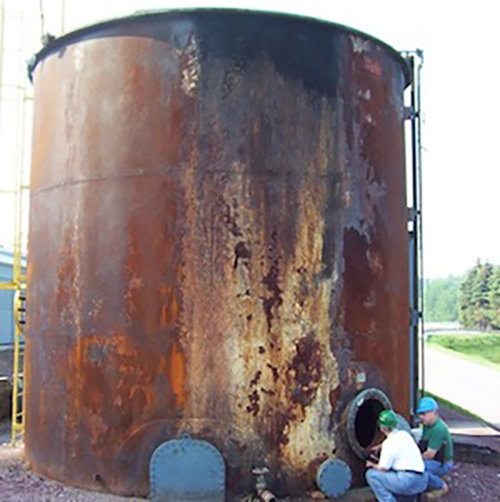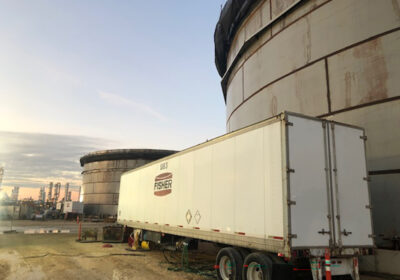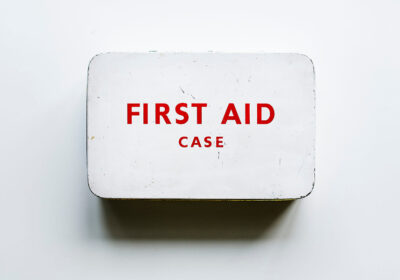STORAGE TANK SAFETY: TOP QUESTIONS TO ASK BEFORE YOUR NEXT TANK REPAIR

Safety first. A quick and simple two-word phrase we’ve all heard countless times before. Whether we’re strapping on a helmet for a bike ride, buckling our seatbelts, or looking both ways before crossing the street, we’ve been taking preventative measures to ensure our safety, and the safety of others, since day one. Unfortunately, however, this isn’t always the case in above-ground storage tank repair.
According to the Chemical Safety Board (CSB), since 1990, there have been over 60 fatalities due to explosions and fires caused by hot work repairs/maintenance on ASTs. In addition, the National Institute for Occupational Safety and Health (NIOSH) reports an additional 160 fatalities associated with confined space entry since 1982.
Before starting any storage tank repair, it’s important to ask the right questions in order to be fully prepared for the task at hand. Below, we’ve outlined the nine most important safety-related questions to ask before starting the next repair on your AST.
1. What was in the tank?
This is the first question that should be answered on every storage tank repair. With 80% of all confined space fatalities attributed to a hazardous atmosphere, employees need to be aware of the hazards and risks associated with the particular chemical(s) the tank contained.
2. What’s around the tank?
Although you may have come to fix only the tank, make sure first that there aren’t any additional hazards in your work area.
3. Is the tank properly isolated?
Lock out/tag out procedures are always a main concern of storage tank repair. However, is simply locking and tagging out a valve enough? Make sure the tank doesn’t need to be physically isolated before moving forward. If the tank does need physical isolation, do not proceed with repairs until it has been properly isolated.
4. Is there proper ventilation?
When working in a confined space like a storage tank, proper air ventilation is crucial to ensuring a safe repair. As a rule of thumb, the American Petroleum Institute recommends a minimum of five air changes per hour to ensure suitable ventilation.
5. What does the inspection report tell us about the tank’s integrity?
How stable is the roof? Are there any holes in the tank? The inspection report will answer questions like these, and provide valuable knowledge to your repairmen.
6. Is the tank gas free and ready for hot work?
Make sure all parts of the tank (pontoons, floors, sumps, pipes, roof drains, etc.) are free of gas before starting any hot work. Remember, more than 60 deaths have been directly caused by hot work on storage tanks since 1990.
7. Is there lead in the paint?
Overexposure to lead is common in the industry and is a leading cause of workplace illness. Make sure you conduct a lab analysis to determine if lead is present, as lead “swab sticks” only have a threshold of detection near 500 ppm. Any detectable amount of lead triggers the OSHA Requirements.
8. Is the floating roof secure?
To ensure roof safety, make sure a form of anti-rotation is in place and in working order. Be sure to verify that all legs have landed and remain vertical as well. For additional safety measures, you can also install roof supports on the shell.
9. Are rescue services available in case of an emergency?
No one plans for accidents to happen. That being said, when accidents do happen, you need to be prepared. Have a safety plan in place and make sure emergency services are available to help in the event something goes wrong.
With the health and safety of your employees on the line, it’s extremely important that you answer these questions before starting your next storage tank repair. For additional information regarding storage tank safety, please check out OSHA’s guide on Major Work Activities for Tank Cleaning Operations.
Stop the problem before it starts! Download our free tip sheet, “6 Signs Your Tank Needs Some TLC” and learn to identify the warning signs associated with a damaged storage tank.
Click here to read more of our blogs





